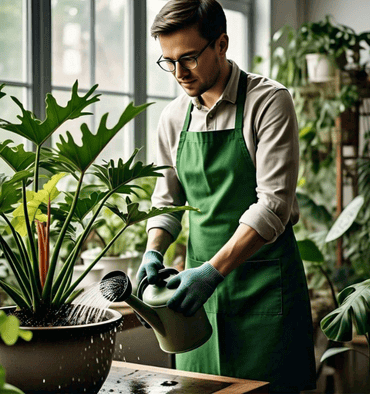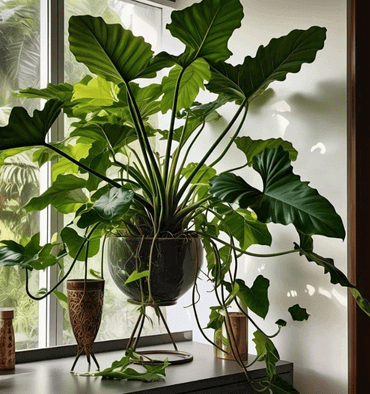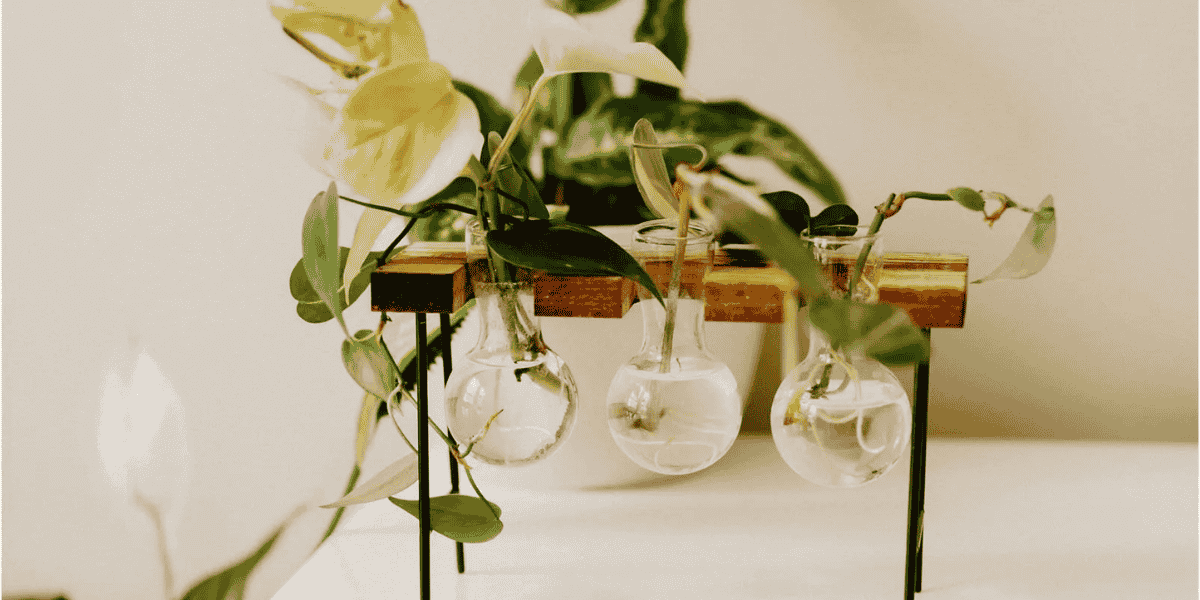Introduction:
Philodendrons are the tropical beauties of the houseplant world—easy-going, fast-growing, and famously forgiving. But when it comes to philodendron watering, there’s often a bit of confusion.
How much is too much? How little is too little?
If you’ve ever found yourself scratching your head while holding a watering can over your philodendron, you’re not alone. Striking the right balance is key to keeping this plant lush and thriving.
Watering your philodendron isn’t just about quenching its thirst—it’s about mimicking its natural rainforest habitat where humidity is high and the soil drains freely.
With that in mind, watering frequency isn’t a one-size-fits-all approach. It changes with seasons, pot size, soil type, and even the humidity of your room.
This guide will take you through every detail—from learning about the plant’s origins to recognizing the signs of overwatering and all the important points in between.
Understanding Philodendron Watering Through Its Natural Habitat

Origin and Climate Adaptation
Philodendrons originate from the dense, moist rainforests of Central and South America.
Picture this: dense tree canopies, misty mornings, and soil that’s never waterlogged but always slightly moist.
These plants have adapted to conditions where they experience heavy rain one moment, followed by days of filtered sunlight and high humidity. They thrive in environments with plenty of moisture but cannot tolerate standing water.
This is why philodendrons enjoy soil that’s moist but not soaked. Unlike succulents that do well with dry spells, philodendrons need a consistent cycle—water, allow to dry, then water again.
Keeping their roots too wet for too long can cause serious problems.
What This Means for Philodendron Watering Indoors

Indoors, it’s rare to perfectly mimic the Amazon rainforest (unless your home is also a greenhouse).
So, we have to do our best to recreate those conditions. This means adjusting your watering routine depending on things like:
- Room temperature and humidity
- Type of potting soil
- Pot size
- Airflow
- Season of the year
By understanding these factors, you can customize your watering schedule.
Instead of following a strict “water once a week” rule, pay attention to your plant’s signals and check the soil moisture.
That’s the key to keeping your philodendron happy.
The Golden Rule of Watering Philodendron:
The “Dry Top Two Inches” Test
One of the great things about philodendrons is that they “talk” to you—you just have to know how to listen.
The simplest way to do that is by using your finger.
The top two inches of soil act as your plant’s communication hub.
Just insert your finger up to the first knuckle—if it feels dry, your plant needs water. If it’s still damp, wait a bit longer.
It’s a simple method, but it helps you avoid the most common mistake: giving your plant too much water.
Why does this matter so much? Because philodendrons take in oxygen through their roots.
When you overwater, you’re essentially cutting off their air supply. The roots end up sitting in stagnant water, begin to rot, and your plant’s health quickly declines.
That’s why sticking to the “dry top two inches” rule is absolutely essential.
Frequency Based on Seasons (Spring, Summer, Fall, Winter)
Let’s break it down by season, because your watering routine should change throughout the year.
Spring & Summer:
This is your philodendron’s active growing phase. It’s putting out new leaves, expanding, and using up water faster.
During these months, you’ll probably need to water about once a week. Still, always check the soil first before watering.
Fall:
Growth begins to slow. Watering will reduce to every 10 to 14 days.
The plant isn’t as thirsty now, and too much water can lead to root rot.
Winter:
Your philodendron enters a semi-dormant state and rests. You’ll likely only need to water every 2 to 3 weeks.
However, if indoor heating dries out the air, consider misting more often while keeping the soil mostly dry.
Following this seasonal rhythm supports your plant’s natural cycle. It ensures you’re watering based on its real needs—not just on routine.
Creating the Right Soil Environment:
Philodendron Watering: Why Well-Draining Soil Matters
Even if your watering routine is perfect, your philodendron will still suffer if the soil holds too much water. The roots need just the right balance—moist but not waterlogged.
Think of soil as your plant’s mattress. You wouldn’t want to sleep on a soggy bed, and neither does your philodendron.
Well-draining soil is key—it lets extra water flow out while holding on to just enough moisture. It also allows air to move through, helping the roots stay healthy and strong.
If you’re using regular garden soil or dense compost, it’s time to stop. These materials compact easily and can suffocate your plant over time.
Philodendron Watering: Ideal Soil Mix for Water Retention:
The ideal soil mix for a philodendron is light, airy, and drains exceptionally well. Here’s a simple DIY blend you can put together:
- 3 parts potting soil (preferably organic)
- 1 part perlite or pumice (for better airflow and drainage)
- 1 part orchid bark or coco coir (to keep the mix loose and well-structured)
This combination replicates the soft, breathable forest floor that philodendrons naturally thrive in.
Also, make sure your pot has several drainage holes—this is crucial.
Standing water at the bottom can quietly damage your plant’s roots. And be sure to check those holes from time to time; compacted soil can block them, turning your pot into a mini swamp—and that’s definitely not what your plant wants.
Philodendron Watering & Misting: The Truth About Humidity Needs
How Often to Mist the Leaves
Humidity isn’t just a bonus for philodendrons—it’s a necessity. These plants come from humid rainforests where their leaves are naturally misted every day.
At home, especially in dry environments or during winter when indoor heating kicks in, misting helps mimic that lush, tropical vibe.
Try misting your philodendron 2 to 3 times a week. If the air in your space is especially dry, daily misting may be needed.
Whenever possible, use distilled or rainwater—tap water can leave mineral spots on those beautiful leaves.
Pro tip: mist in the morning. This allows the leaves to dry throughout the day, reducing the risk of fungal issues.
Misting at night and leaving the leaves damp? That’s a recipe for problems.
Best Tools and Techniques for Misting
You don’t need high-tech equipment to mist properly, but using a fine-mist spray bottle can make a big difference. The goal is a light, even mist—not soaking the plant.
Here are some quick tips:
- Use lukewarm water—cold water can shock your plant
- Mist the underside of the leaves, where the pores are most active
- Avoid wetting the soil while misting—this step is just for the leaves
You can also increase humidity naturally by grouping your philodendron with other plants or placing a pebble tray with water underneath the pot.
Want to take it a step further? A humidifier is a great investment and works wonders for tropical plants like philodendrons.

